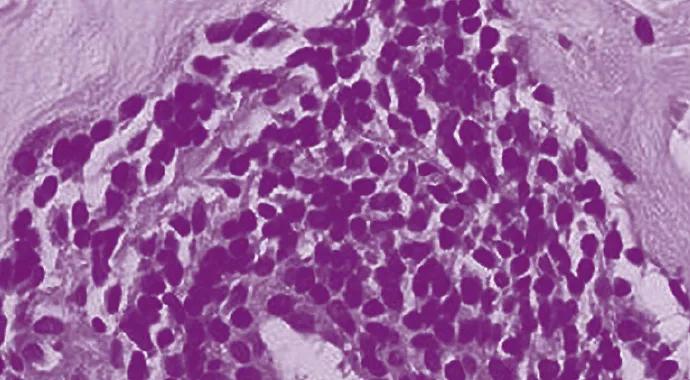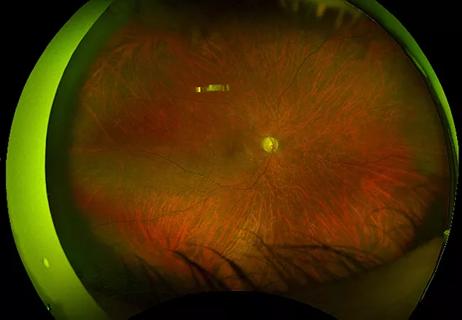Comorbid illnesses, medication toxicities among risks

Cleveland Clinic is a non-profit academic medical center. Advertising on our site helps support our mission. We do not endorse non-Cleveland Clinic products or services. Policy
You are asked to see a hospitalized 79-year-old male who was just diagnosed with granulomatosis with polyangiitis (Wegener’s) (GPA). His disease features include pulmonary infiltrates, glomerulonephritis with a creatinine level of 2.5 mg/dL, episcleritis, positivity for proteinase 3-cANCA and a renal biopsy demonstrating a pauci-immune crescentic glomerulonephritis. His medical history is notable for hypertension, chronic obstructive pulmonary disease and prostatic enlargement with large post-void residuals.
This patient’s case raises the following questions:
Although giant cell arteritis remains the vasculitic disease most commonly seen in geriatric patients, it is not uncommon for many forms of vasculitis to present after age 65. As illustrated by this case, GPA can occur in the later years of life, with series from the United Kingdom demonstrating onset peaking among individuals aged 65 to 74 years.
Establishing the diagnosis of GPA can be complex in older patients, in whom the potential for infection and neoplasm plays an even larger role in the differential diagnosis of many features. The presence of comorbid diseases frequently affects the symptoms and signs with which older patients may present. These comorbidities also can influence the recovery potential of organs as well as treatment decisions.
Age and degree of renal impairment have been associated with unfavorable outcomes. While this should not be interpreted to mean that older patients with GPA uniformly fare poorly, it highlights the need to employ strategies to minimize adverse events, many of which are related to treatment.
There are no differences in the medications used to treat GPA in older vs. younger adults. However, complete care of the patient with GPA must take into account how factors common to advanced age may affect treatment and outcome. This includes the risk of infection seen with all immunosuppressive therapies as well as medication-specific issues.
-Infection and immunization. Infection is the primary cause of death in older patients with GPA. Discussion of infection symptoms with patients and their families is important, as it increases the likelihood of rapid reporting and intervention should infection occur. Bacterial infections most commonly include pneumonia, sepsis and urinary tract infections. Pneumocystis jiroveci is an important opportunistic pathogen associated with a high mortality rate. All patients with GPA receiving an induction regimen should receive prophylaxis against P jiroveci, which ideally consists of trimethoprim/sulfamethoxazole in patients without sulfa allergies.
In older patients, maintaining up-to-date immunizations is important, particularly against pneumococcal infections and influenza. Because the herpes zoster vaccine, zoster vaccine live (Zostavax®), is a live attenuated vaccine, it is contraindicated in immunosuppressed patients with GPA. It is important to recognize that patients with GPA receiving immunosuppressive therapies have an increased risk of developing zoster. Should zoster develop, antiviral therapy should be initiated immediately (with dosage adjustment as needed) to minimize the likelihood of dissemination or complications.
-Additional risks from glucocorticoids. Falls are an important cause of morbidity and mortality in older patients. Prednisone can contribute to an increased risk of falls through cataract formation, which affects visual acuity, and proximal myopathy, which can compromise mobility. Patients should undergo a regular assessment of muscle strength at clinic visits, which should also include a review of strategies to prevent falls, in some instances supplemented by an in-home assessment.
Prednisone-induced bone loss can intensify the risk of both fall-related and insufficiency fractures. Because older patients may already have bone loss before starting prednisone, densitometry should be obtained early in treatment and every one to two years thereafter. Proactive measures to protect bone health are essential and include assessment of calcium intake, measurement of vitamin D levels, a patient-appropriate exercise program and pharmacologic therapy to correct or prevent bone loss.
Prednisone can induce diabetes or complicate glucose management in existing diabetes and can also increase blood pressure. Older patients may be particularly sensitive to the neurocognitive effects of prednisone, which can include mood swings, memory impairment and even psychosis ‒ all of which can compromise patient safety.
-Induction treatment. Whether to use cyclophosphamide or rituximab for remission induction in newly diagnosed severe GPA is an important decision in patients of all ages. Although cyclophosphamide should continue to be viewed as a valid and appropriate treatment option for older patients, several considerations should be factored into how to most safely use this medication in these individuals.
With both daily and intermittent cyclophosphamide, bone marrow sensitivity ‒ with the attendant risk of cytopenias ‒ plays a role in toxicity for the older patient. In many instances, a lower starting dose of cyclophosphamide may be appropriate to assess the effects on blood counts. The recommendation that all patients treated with cyclophosphamide undergo blood count monitoring every one to two weeks has particular importance in geriatric patients. In addition to concerns regarding white blood cell and platelet counts, the red blood cell count may have greater significance in older adults, especially those with heart or lung disease, who may tolerate anemia poorly.
For patients receiving daily cyclophosphamide, effective urinary elimination of toxic metabolites is critical in order to minimize urothelial injury. Patients with urinary retention are at higher risk of hemorrhagic cystitis with cyclophosphamide, so this may be a setting in which rituximab is favored.
Older patients also may have received past treatment for solid or hematologic neoplasms. For such patients, cyclophosphamide poses concerns in terms of potential bone marrow effects and reduction of host surveillance. Recent guidelines for rheumatoid arthritis have favored rituximab as a choice for patients with past neoplasms who require biologic therapy, although any extrapolation of this recommendation to GPA must be considered with caution.
Methotrexate may be another option for remission induction in GPA patients who do not have severe disease and are able to take this agent despite the precautions discussed below.
-Maintenance therapy. Azathioprine, methotrexate and mycophenolate mofetil are the primary agents used for remission maintenance in GPA. With all three medications, laboratory monitoring should be performed every one to two weeks for the first month of therapy and monthly thereafter. Methotrexate is contraindicated in patients with renal insufficiency, and it must be prescribed only after careful assessment of the patient’s reliability in taking medications, as life-threatening toxicity can occur if this agent is taken more than once a week.
The optimal duration of maintenance therapy is unclear. Because the desire to avoid relapse and the associated requirement for high-dose prednisone may be particularly important in older individuals, continuation of maintenance therapy for longer durations should be considered in the absence of side effects.
After careful discussion, our case patient elected to receive rituximab because of his significant urinary retention. His course was complicated by a urinary tract infection that was treated successfully and a rise in blood pressure requiring adjustment of his medications. He experienced some proximal weakness with prednisone but was able to remain ambulatory with physical therapy and appropriate assistive devices. With treatment, his renal function improved to his prior baseline of 1.8 mg/dL and his pulmonary infiltrates cleared. Although he has had to cut back on some activities, he and his family are very pleased with his level of functioning, and he maintains a good quality of life.
As this case illustrates, GPA is a treatable disease, and excellent outcomes can be achieved in people of all ages. In older patients, outcome is influenced by comorbid illnesses and an enhanced risk for medication toxicities. Recognition of these issues, proactive monitoring and patient education all play an important role in optimizing the potential for recovery in geriatric patients with GPA and all forms of vasculitis.
Dr. Langford is Director of the Center for Vasculitis Care and Research as well as Vice Chair of the Department of Rheumatic and Immunologic Diseases.

Evidence-based therapies, monitoring, prevention and more

Holistic approach is necessary to ensure a correct diagnosis

Knowing the affected organs and vessels can help in identifying cause

When to consider the possibility of pulmonary artery involvement

When GCA initially presents without cranial symptoms

Relapses are frequent even with long periods of remission

Multidisciplinary management resolves complex case

Raising awareness of a common manifestation